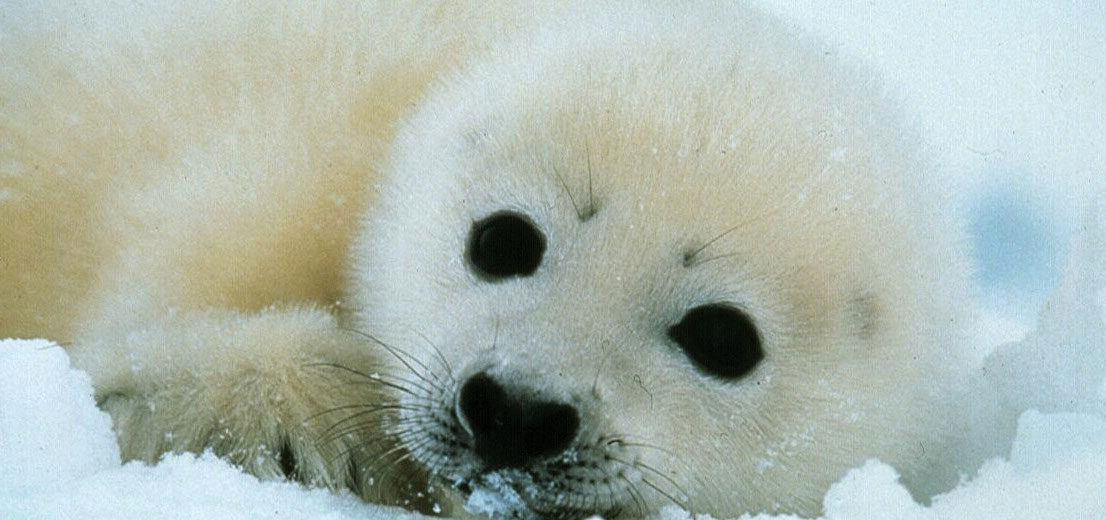
The harp seal, aka saddleback seal, calls the north Atlantic and Arctic Oceans its home, spending long bouts of time following oceanic pack ice. These social “true seals” can be found in pods of dozens up to hundreds. They get their name from the harp-shaped markings on their back, although pups are solid white. Harp seals can be found in Canada, Iceland, Greenland, Russia, Norway, United States, Denmark, Finland, France, the Faroe Islands, Spain, Germany, and the United Kingdom. Due to their numbers, an estimated 5.5 million and increasing, they are listed as Least Concern by the IUCN.
First the Stats…
Scientific name: Pagophilus groenlandicus
Weight: Up to 290 lbs.
Length: Up to 5.6 feet
Lifespan: Up to 35 years
Now on to the Facts!
1.) Being highly migratory these seals have been known to travel more than 3,100 miles round trip for a meal.
2.) They are the most abundant seal species found in the northern hemisphere.
3.) Seals that stray from the pod are called vagrants.
4.) Harp seals prey on capelin, polar and Arctic cod, herring, sculpin, Greenland halibut, redfish, plaice, crustaceans like amphipods, krill, decapods, shrimp, and prawns. They will also eat squid. In total, they eat up to 70 types of fish and 70 species of invertebrates.
5.) These seals are the most prolific pinnipeds in the northern seas.
But wait, there’s more on the harp seal!
6.) Harps spend most of their lives in the ocean and go on land to rest and mate.
7.) Female harp seals can spot their pup within thousands of others by their scent!
Did you know…?
Harp seals can dive up to 900 feet and can hold their breath for up to 15 minutes!
8.) Polar bears, orcas, sharks, and walruses all prey on either adult or juvenile harp seals.
9.) Pups call to their mother by bawlng and will mumble while playing.
10.) Adult seals make around 20 different calls, while courting.
Now a Short Harp Seal Video!
Also, check out the Critter Science YouTube channel. Videos added frequently!
Want to suggest a critter for me to write about? Let me know here.



